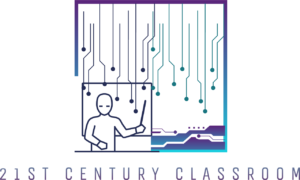Effective classroom management plays a pivotal role in creating a conducive learning environment, fostering student engagement, and maximizing academic outcomes. While educators constantly seek new approaches to enhance classroom management, inspiration can be found in the strategies employed by top companies. Drawing from the corporate world’s best practices, educators can introduce innovative classroom management strategies that captivate students and unlock their full potential. In this article, we will explore a range of approaches inspired by successful companies, enabling educators to create a dynamic and enriching classroom experience.
I. Creating a Positive Classroom Culture:
A positive classroom culture lays the foundation for productive learning experiences. Inspired by companies like Google, educators can implement strategies that foster collaboration, motivation, and open communication. Team-building activities encourage students to work together, developing social skills and enhancing engagement. Additionally, peer recognition programs cultivate a sense of belonging and motivate students to excel. By fostering an environment where students feel valued and heard, educators can create a positive classroom culture that stimulates learning and growth.
II. Implementing Individualized Learning:
Catering to the diverse needs of students is essential to unlocking their full potential. Companies like Khan Academy and LinkedIn Learning have embraced personalized learning, tailoring experiences to individual employees. In the classroom, educators can draw inspiration from these initiatives to implement individualized learning strategies. Differentiated instruction allows students to progress at their own pace, ensuring that no student is left behind or held back. Utilizing adaptive learning technologies further enhances individualized learning, as it adjusts to each student’s strengths and weaknesses. Encouraging students to set personal learning goals empowers them to take ownership of their education, promoting a lifelong love for learning.
III. Utilizing Technology for Engagement:
Technology has revolutionized productivity and collaboration in the corporate world, and its benefits can be harnessed in the classroom as well. Companies like Apple and Microsoft have embraced technology to enhance efficiency and engagement. Educators can follow suit by integrating educational technology tools into their classroom management strategies. Interactive whiteboards enable dynamic and immersive learning experiences, while educational apps provide engaging and interactive content. Online collaboration platforms facilitate student interaction and foster a sense of community. By effectively utilizing technology, educators can create an engaging and inclusive learning environment that resonates with digital-native students.
IV. Promoting Autonomy and Responsibility:
Autonomy is a driving force behind productivity and job satisfaction in the corporate world. Inspired by successful companies, educators can empower students by promoting autonomy and responsibility within the classroom. Offering students choice in assignments and projects allows them to explore their interests and unleash their creativity. Project-based learning provides opportunities for students to take ownership of their learning, solving real-world problems and developing essential skills. Moreover, student-led conferences allow students to reflect on their progress, set goals, and actively engage in their academic journey. By nurturing autonomy and responsibility, educators equip students with valuable skills that transcend the classroom walls.
V. Embracing Continuous Improvement:
In the corporate world, companies like Apple and Amazon foster a culture of continuous improvement and embrace failure as a learning opportunity. Educators can draw inspiration from this mindset by encouraging a growth mindset among students. By reframing mistakes as learning experiences and providing timely feedback, educators instill resilience and a desire for growth in their students. Moreover, nurturing a growth mindset enables students to develop a love for learning and a willingness to take on challenges. Embracing continuous improvement within the classroom encourages students to strive for excellence and equips them with invaluable skills for future success.
Takeaway
By drawing inspiration from top companies’ management strategies, educators can revolutionize classroom management and create an environment that cultivates student engagement, collaboration, and individual growth. From fostering a positive classroom culture to implementing individualized learning approaches, utilizing technology, promoting autonomy and responsibility, and embracing continuous improvement, educators can leverage these innovative strategies to transform their classrooms into dynamic hubs of learning.
The adoption of a positive classroom culture not only enhances student collaboration but also promotes motivation and well-being. Taking a page from Google’s playbook, educators can implement team-building activities and peer recognition programs to create a sense of belonging and boost student engagement. By prioritizing open communication and valuing student input, teachers foster an inclusive environment where every student’s voice is heard and respected.
Individualized learning is a powerful tool for addressing the diverse needs of students. Inspired by companies like Khan Academy and LinkedIn Learning, educators can embrace differentiated instruction and adaptive learning technologies. These approaches enable students to progress at their own pace, receive tailored support, and build upon their strengths. By encouraging students to set personal learning goals, educators empower them to take ownership of their education and develop a lifelong love for learning.
Integrating technology into the classroom enhances student engagement and unlocks new avenues for interactive learning. Drawing inspiration from companies like Apple and Microsoft, educators can leverage educational technology tools to create dynamic and immersive experiences. Interactive whiteboards facilitate collaborative problem-solving, while educational apps provide interactive content and gamified learning experiences. Online collaboration platforms foster student interaction, enabling them to connect, share ideas, and work together. By incorporating technology thoughtfully, educators can tap into students’ digital fluency and create a stimulating and future-focused learning environment.
Promoting autonomy and responsibility is another essential element of effective classroom management. Taking cues from successful companies, educators can empower students by offering choices in assignments and projects. This approach nurtures students’ creativity, autonomy, and critical thinking skills. Implementing project-based learning provides students with opportunities to explore their interests, solve real-world problems, and collaborate with their peers. Student-led conferences further promote responsibility and reflection, allowing students to take an active role in their educational journey. By giving students agency, educators cultivate a sense of ownership and instill valuable skills that extend beyond the classroom.
Embracing a culture of continuous improvement is paramount in both the corporate world and the classroom. Companies like Apple and Amazon embrace failure as a stepping stone to success, encouraging employees to learn from their mistakes. Educators can foster a similar growth mindset within their classrooms. By reframing mistakes as valuable learning opportunities and providing timely feedback, teachers help students develop resilience, perseverance, and a desire to grow. Cultivating a growth mindset empowers students to embrace challenges, take risks, and continuously strive for improvement.
In conclusion, innovative classroom management strategies inspired by top companies can revolutionize teaching practices and create an environment that nurtures student engagement, collaboration, and individual growth. By fostering a positive classroom culture, implementing individualized learning approaches, leveraging technology, promoting autonomy and responsibility, and embracing continuous improvement, educators can transform their classrooms into vibrant hubs of learning. By drawing inspiration from successful companies, educators are well-equipped to adapt and innovate, providing students with the skills and mindset needed to thrive in a rapidly evolving world. Let us embrace these innovative strategies and embark on an exciting journey towards unlocking the full potential of our students. Together, we can create an educational experience that prepares them for a bright and successful future.

